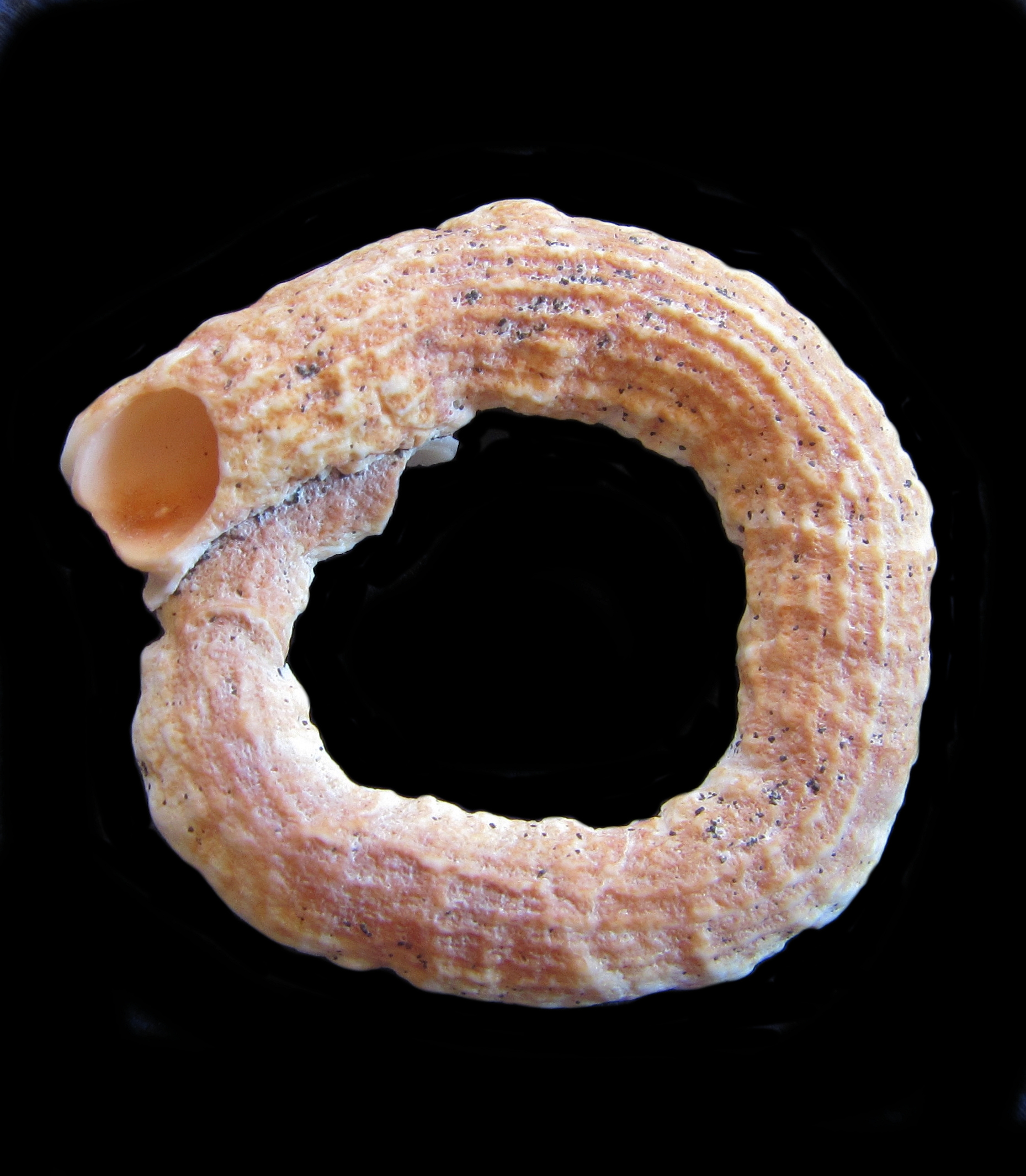Margarita Worm Shell, Thylacodes margaritaceus
 Margarita Worm Shell, Thylacodes margaritaceus. Shell collected off the beach in the greater Los Cabos area, Baja California Sur, May 2018. Size: 7.9 cm (3.1 inches) in length.
Margarita Worm Shell, Thylacodes margaritaceus. Shell collected off the beach in the greater Los Cabos area, Baja California Sur, May 2018. Size: 7.9 cm (3.1 inches) in length.
Phylogeny: The Margarita Worm Shell, Thylacodes margaritaceus (Chenu, 1844), is a gastropod mollusk that is a member of the Vermetidae Family of Worm Shells. The genus Thylacodes is one of twelve genera in this family, and there are forty species in this genus. They are also known as the Margarita Tube Shell and in Mexico as Caracol Gusano and Caracol de Tubos.
Description: Margarita Worm Shells are tubular, and usually have a flat profile and a flattened base. They grow in a fairly regular spiral with irregular patterns occurring when surrounding obstructions or overcrowding restrict their growth space. The shells are marked with strong lengthwise ridges and lack an operculum. They are normally found as solitary animals. The shells are gray to brownish in color. Margarita Worm Shells reach a maximum of 10 cm (3.9 inches) in length; they have apertures that are 1.0 cm (0.4 inches) to 1.3 cm (0.5 inches) in diameter.
Habitat and Distribution: Margarita Worms are found firmly attached to rocks and dead shells from the intertidal zone to depths up to 45 m (115 feet). They are a subtropical to tropical Eastern Pacific species that are found in Mexican waters of the Pacific Ocean in the Sea of Cortez, from Bahía San Carlos, Sonora south to Guatemala They have not been documented from along the west coast of the Baja Peninsula.
Ecology and Behavior: Margarita Worms are suspension feeders that feed primarily on planktonic algae and suspended organic matter, which they capture with mucous nets. They are gonochoric and reproduce sexually, through spermcast spawning, with internal fertilization. There is no mention in the available literature of them engaging in any types of parasitic, commensal, or symbiotic relationships, though their empty shells are used for housing by the Holmes Hermit Crab, Pylopagurus holmesi. From a conservation perspective they have not been formally evaluated however they are fairly common with a relatively wide distribution and should be considered to be of Least Concern.
Synonyms: Serpulorbis margaritaceus, Vermetus margaritaceus, and Vermetus margaritarum.